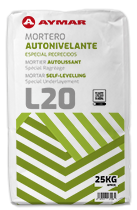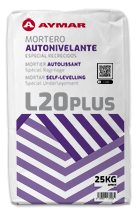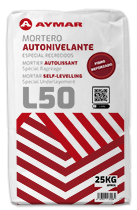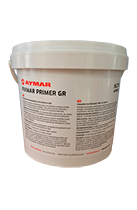Self-levelling mortar L20
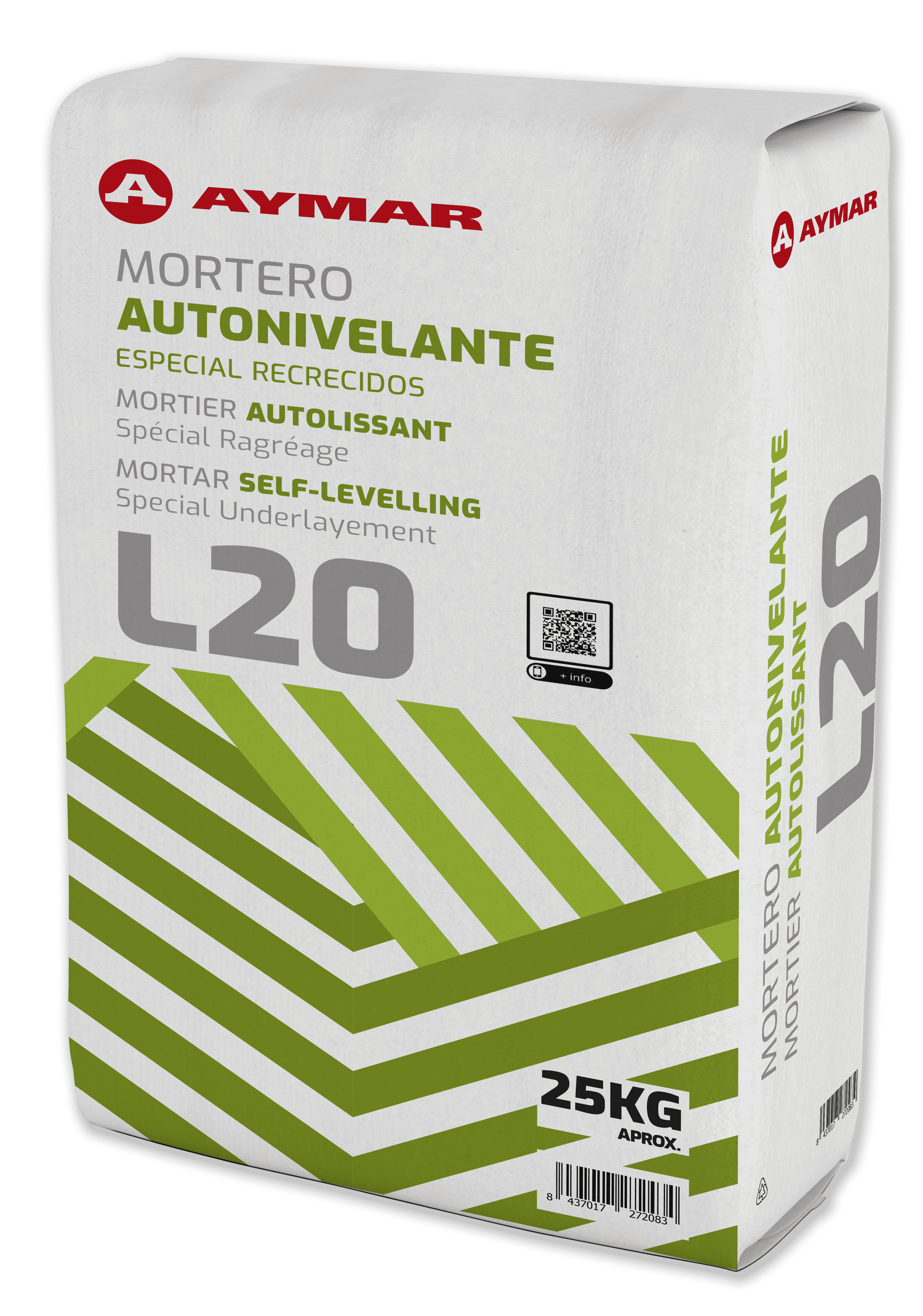
Self-levelling, polymer-modified, fluid, cementitious and fiber reinforced mortar, especially for screeds and levelling screeds with thicknesses between 3 mm and 20 mm, which, once hardened, must be covered by coatings.
Composition
Composed of crushed marble aggregates used in construction, Portland cement and additives of both organic and inorganic nature that give it better characteristics in terms of adherence, fluidity and levelling power.
Made in Spain.
- Application field
- Instructions of use
- Recomendations of use
Mortar with excellent levelling power and easy application for the regularisation of continuous screeds, ideal in those situations where a levelled base is required as a support for a later application of another type of covering, such as parquet, carpet, ceramic, linoleum, ceramic materials, marble,... Suitable for floors with radiant heating and as a finishing material for synthetic coverings. Not suitable for wear surfaces. Suitable for indoor and outdoor use.
- Preparation of the substrate: the substrate on which the application is to be carried out must be fully cured, resistant, consistent, dry, clean of dust, paint, oil, etc. and free of any traces of release agent. In case of cracks, small holes or gaps, repair them with the same mortar with a thicker consistency. On large works, regularly spread levelling feet over the entire surface to achieve a perfect finish and excellent planimetry. The surface should preferably be open-pored and should be treated by shot blasting, diamond grinding or milling. On low-porous substrates, ceramic or polished concrete, the screed must be adhered by previously applying a HT-50 adhesion bridge primer on the substrate and allow to dry between 1 and 4 hours, when dry to the touch.
- Preparation of the mixture: in manual application: 6 l of water per bag and mix manually or mechanically, with an electric mixer at low revolutions until a fluid and homogeneous paste is obtained. Let the mixture stand for about 2 minutes and mix again. For machine application: Adjust the pressure with the corresponding water, depending on the type of machine, until a very fluid paste is obtained.
- Application of the paste: respecting the mixing water, the expansion, perimeter or structural joints, and the desired maximum levels, proceed to pour or pump the mortar, giving the mortar oscillations so that the mortar itself is self-levelling. To promote adhesion, the final thickness is obtained either with a trowel or with a smooth metal trowel. Once the product has been spread, the use of a spiked roller is recommended to eliminate air bubbles and achieve a completely smooth surface.
- The application temperature must be between 5 °C and 35 °C in air and between 5 °C and 25°C on the substrate.
- Do not apply if frost is expected, in full sun and avoid draughts, if necessary cover windows, doors, .....
- Do not apply on damp floors or floors susceptible to dampness.
- For surfaces larger than 12 m2, make perimeter movement joints by installing strips of compressible material 10 mm thick where the screed meets any intervening construction elements.
- For large areas, it is recommended that partition joints be made every 25 m2.
- The joint width should be at least 6 mm and should be filled with mastic.
- In order to apply a second coat, the first coat must not be completely dry, otherwise HT-50 adhesion bridge should be applied.
- Wait 24 hours to coat with ceramic or textile flooring. To cover with wood, PVC or paint, wait a minimum of 7 days.
- On substrates with radiant heating, turn it off 24 hours before application and wait 48 hours before turning it on again.
- Not suitable for applications where heavy vehicle traffic is required.


